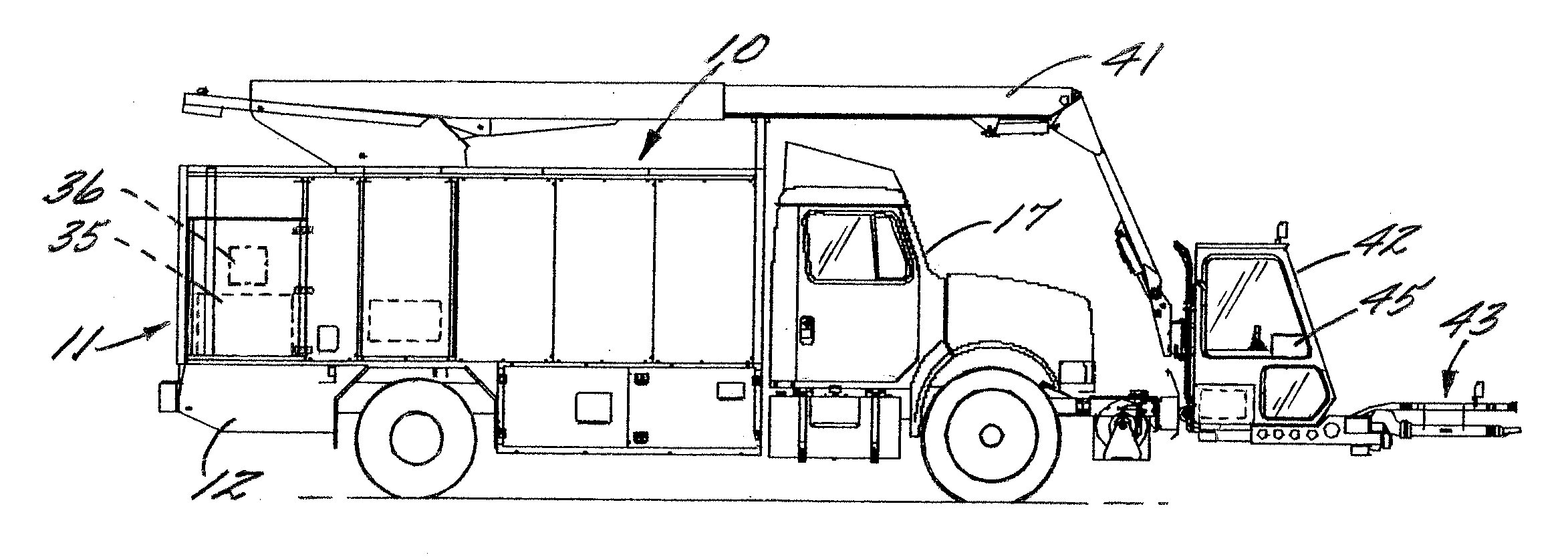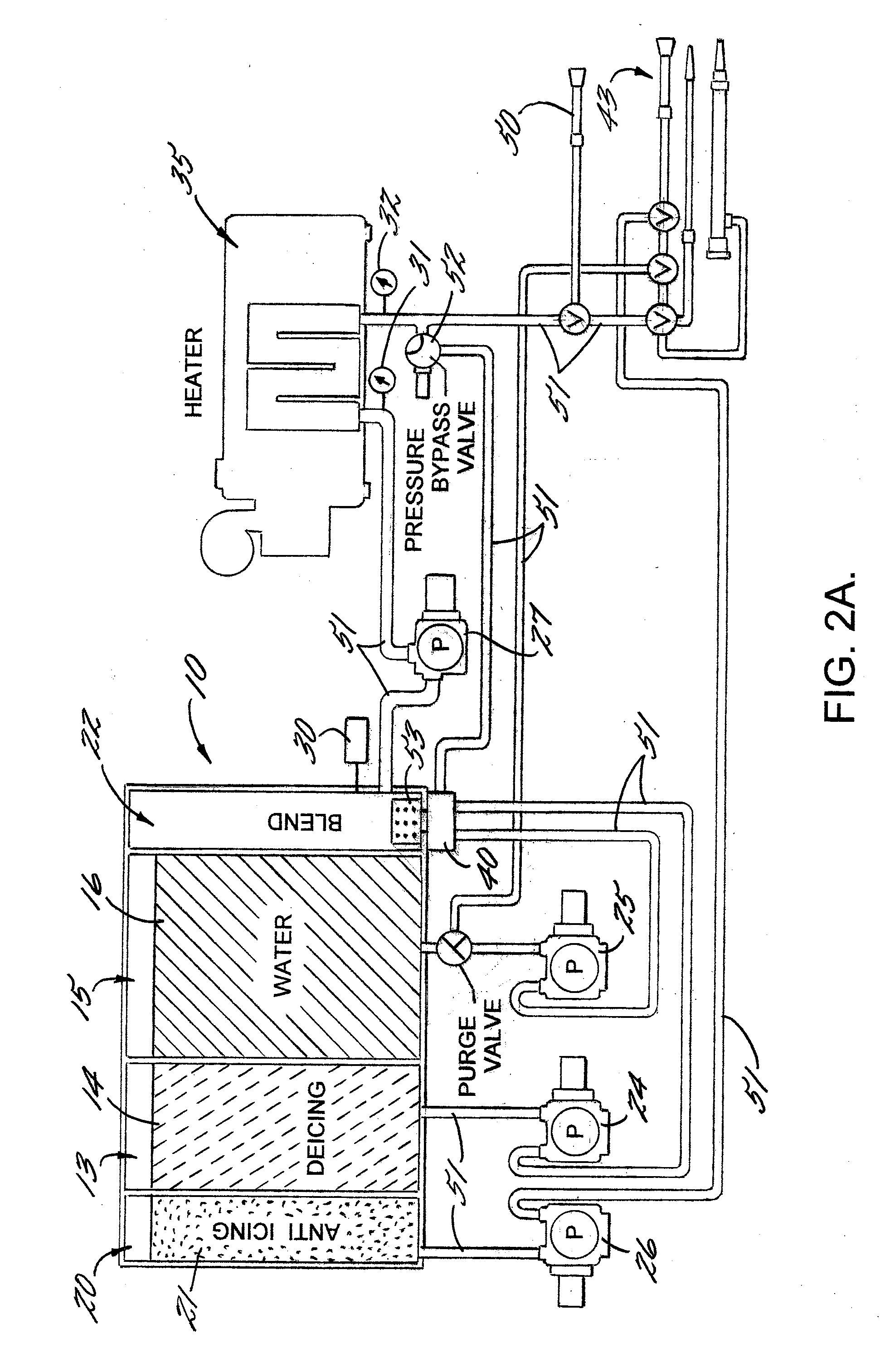Apparatus and method for blending fluids
- Summary
- Abstract
- Description
- Claims
- Application Information
AI Technical Summary
Benefits of technology
Problems solved by technology
Method used
Image
Examples
Embodiment Construction
[0031]The invention will now be described more fully hereinafter with reference to the accompanying drawings, in which multiple embodiments of the invention are shown. This invention may, however, be embodied in different forms and should not be construed as limited to the embodiments set forth herein. Rather, these embodiments are provided so that this disclosure will be thorough and complete and will fully convey the scope of the invention to those skilled in the art. Like numbers refer to like elements throughout. Further, like numbers with the prime notation refer to like or similar elements of the structure.
[0032]An overall view of the apparatus 10 for blending fluids that incorporates features of the present invention is set forth in FIGS. 1A and 1B. As depicted in FIG. 1B, the apparatus 10 includes a first tank 13 containing a first fluid 14, a second tank 15 containing a second fluid 16, a third tank 20 containing a third fluid 21, and a blend tank 22 in fluid communication ...
PUM
 Login to view more
Login to view more Abstract
Description
Claims
Application Information
 Login to view more
Login to view more - R&D Engineer
- R&D Manager
- IP Professional
- Industry Leading Data Capabilities
- Powerful AI technology
- Patent DNA Extraction
Browse by: Latest US Patents, China's latest patents, Technical Efficacy Thesaurus, Application Domain, Technology Topic.
© 2024 PatSnap. All rights reserved.Legal|Privacy policy|Modern Slavery Act Transparency Statement|Sitemap



